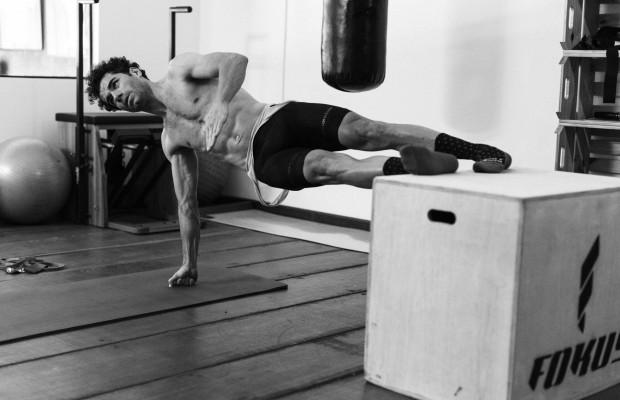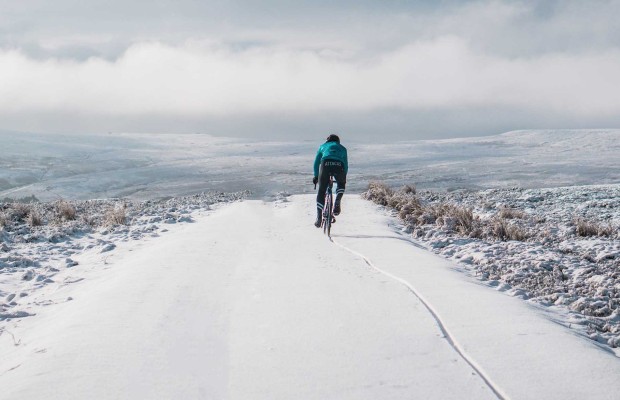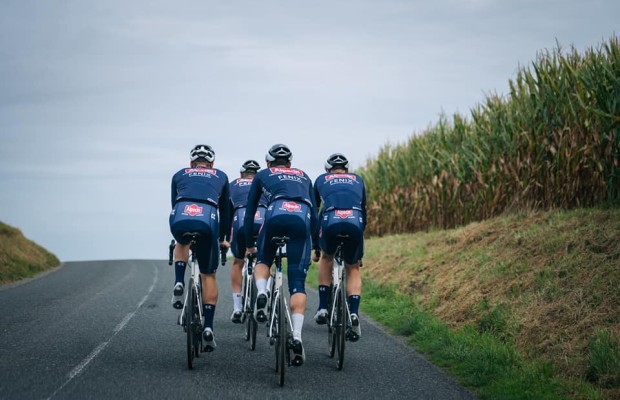Everything you need to know about cadence
When it comes to achieving optimal pedaling, cadence is one of the most important parameters, which the average cyclist often overlooks. The result is that we continue to see stuck pedaling that, on long rides, can lead to cramps and other muscle problems. This is an aspect that we can work on to help us make the most of the power our legs provide.

Achieve the perfect pedal stroke by pedaling at the right cadence
Those images of cyclists twisting on every slight incline while struggling to balance the bike or powerful riders pedaling slowly while devouring the asphalt are a thing of the past. This was a cycling era where biomechanics was a matter of trial and error, where the only way to measure effort was with a stopwatch, and bikes had very few gear ratios, forcing riders to choose the best gear for each ride.
However, between the 80s and 90s, studies on exercise physiology advanced, and researchers began to understand, thanks to tools like those primitive power meters, how to quantify different performance parameters. From the beginning, determining the optimal pedaling cadence has been a subject of study that has generated a lot of discussion, with recommendations for a smooth and lively pedaling style.
RECOMENDADO

To understand the importance of cadence, we must remember that power output is the result of multiplying the force exerted by the cyclist's legs on the pedals by the cadence at which they rotate. In other words, to generate more power, we have two options: apply more force on the pedals or pedal faster, or both.
In professional cycling and, by imitation, in cycling tourism, riders traditionally pedaled with force, a consequence of the limited and long gear ratios of early road bikes. It wasn't until the late 90s, with the introduction of 8, 9, and 10-speed drivetrains, that cyclists had enough gear ratios to tackle all types of terrain.
However, Lance Armstrong's return after recovering from testicular cancer with a new paradigm was decisive. Unable to return as the brute force rider who came from triathlon, he made a drastic change in his training and began surprising everyone by climbing mountains with a cadence never seen before. This pedaling technique, copied by Armstrong and his coach Chris Carmichael from mountain bikers with tremendous pedaling efficiency, became more common over time.

With the improvement in bike drivetrains, offering more gear options to climb traditionally challenging slopes, this pedaling style became increasingly popular. However, in a traditional sport like road cycling, many riders still pedal with force because that's how they've always done it.
Just as pedaling with force is detrimental to pedaling efficiency by demanding more from the muscles at the expense of the cardiovascular system, which is more efficient than brute force, pedaling excessively fast is also wasteful. This can lead to ridiculously high oxygen consumption without translating into power, similar to driving a car in first gear.
Today, it is easy to measure cadence, either with a sensor placed on the crank and frame or, even simpler, with accelerometers included in power meters, which are becoming more common on bikes. Seeing this number on our cycling computer allows us to learn which cadence ranges we are most comfortable in and be aware of when we are pedaling too fast or too slow, so we know when to change gears, just like we would in a motor vehicle.

Regarding the optimal cadence, as mentioned earlier, there are countless studies on the subject, and the reality is that there is no definitive answer because cadence is a personal parameter. In cycling literature, reference is often made to self-selected cadence, which is the cadence the body chooses during maximum effort. Typically, the cadence obtained by the cyclist in a typical 20-minute power test is used as a reference.
While this cadence may be optimal, the goal is to add flexibility and increase the range of cadences in which we are efficient, allowing us to save energy by pedaling slower when riding in a group, for example, or pedal very fast when speed increases or when facing a steep climb. In any case, the key is to maintain a coordinated pedal stroke, avoiding getting stuck in the cycle when cadence drops and not losing form, for example, by swaying the hips when pedaling at high cadence. This flexibility, like everything else, can be trained and will make us efficient in a wider range of situations.





